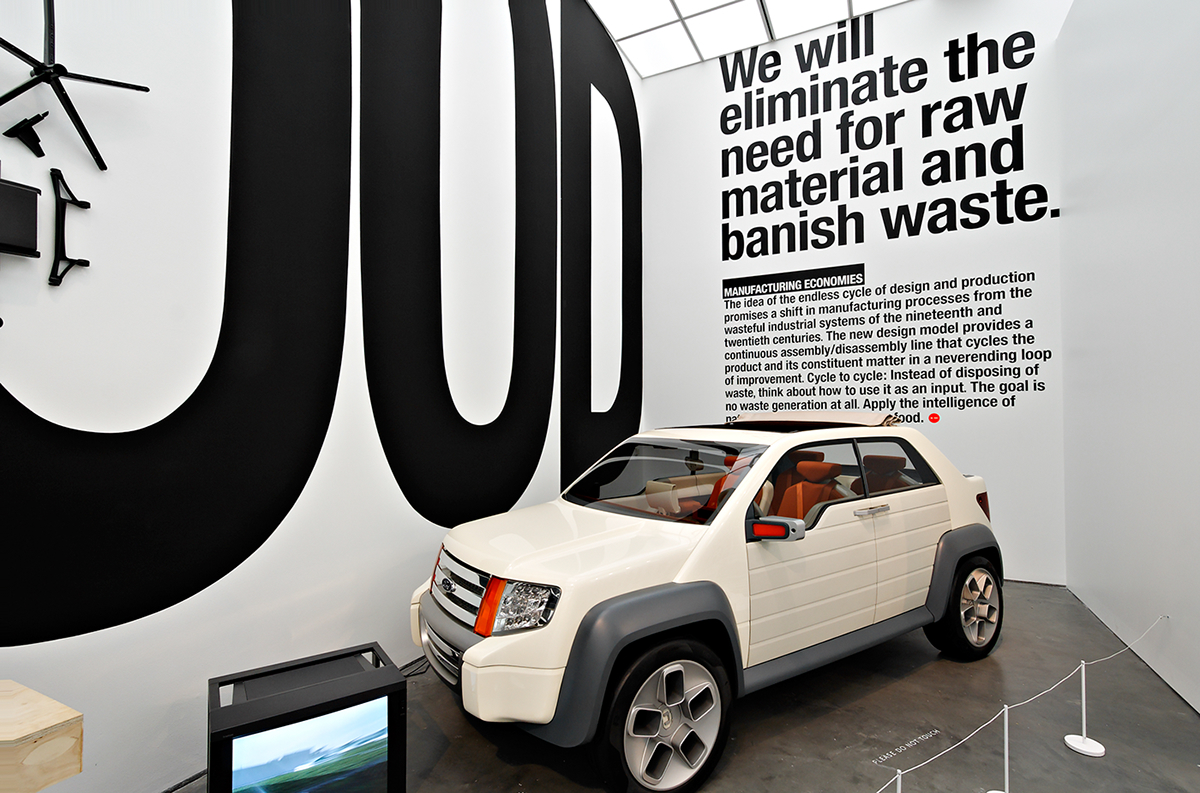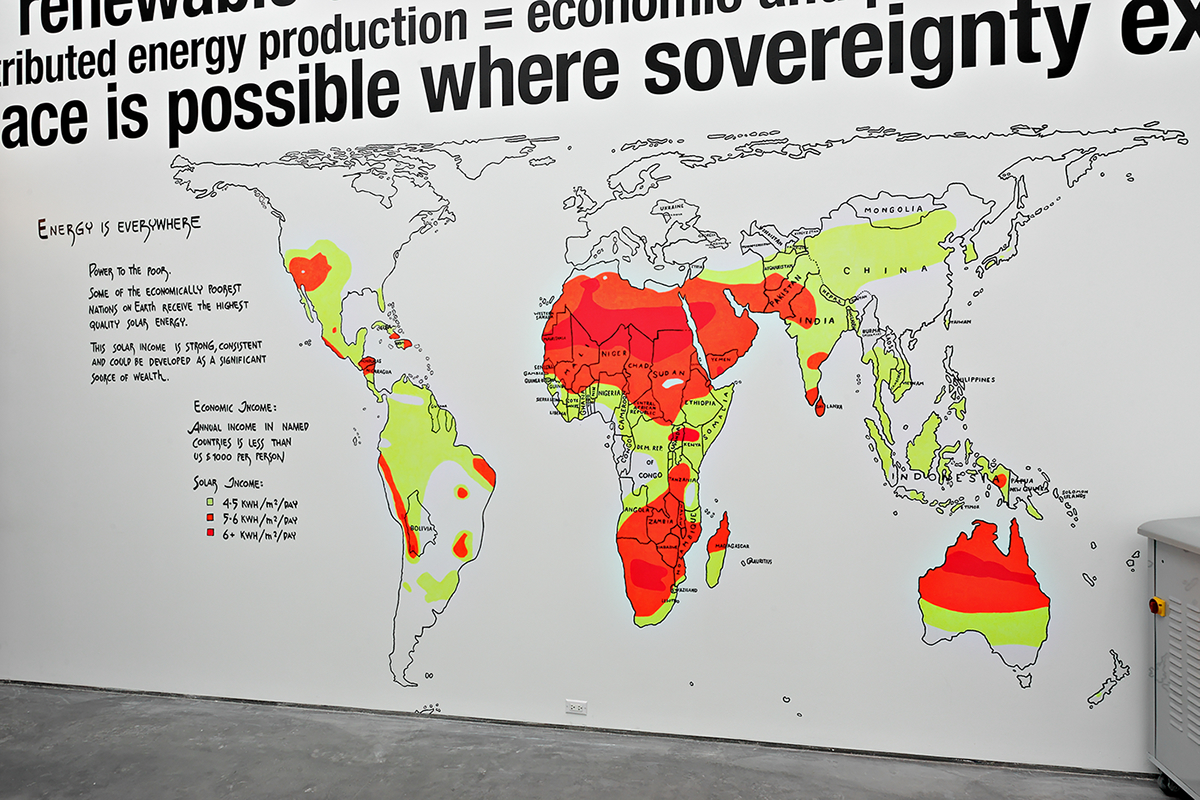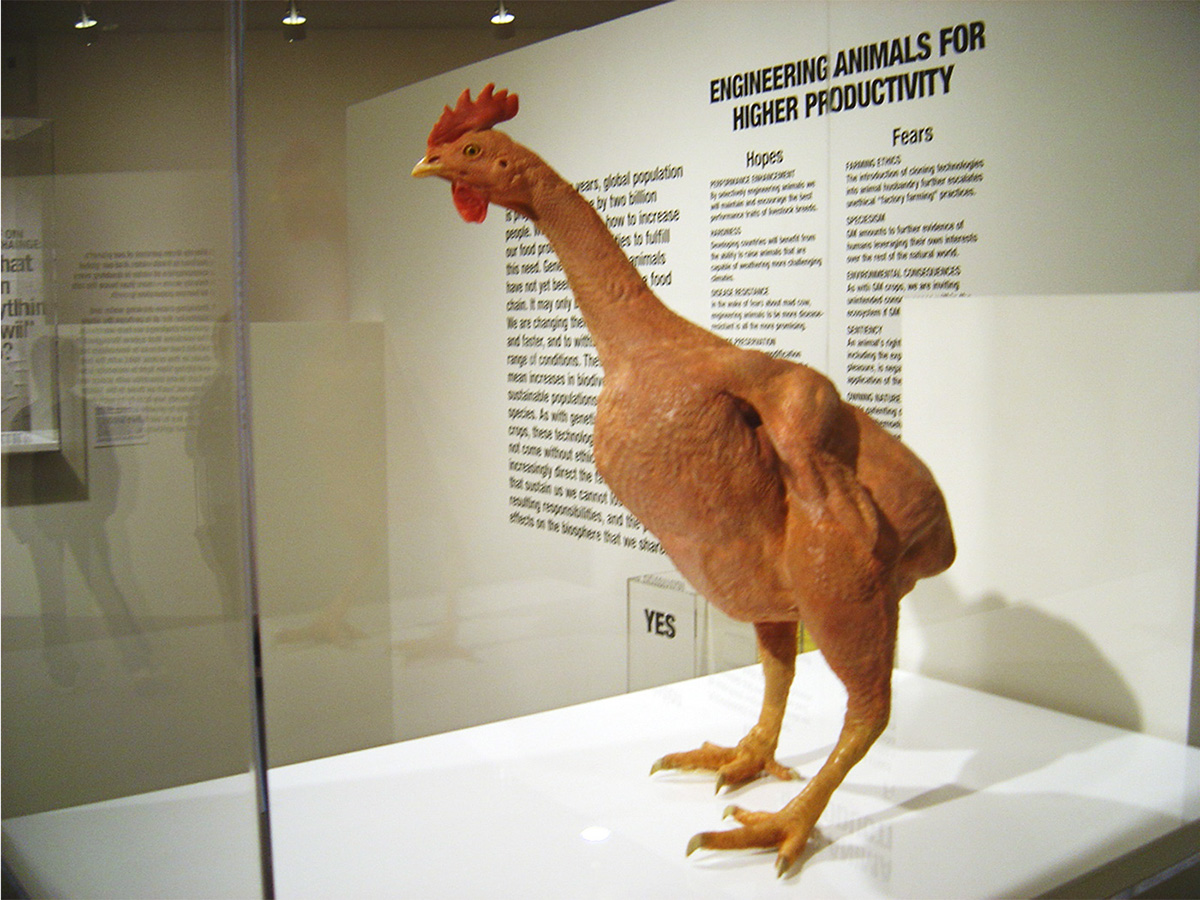
We each have the power to inspire. To inspire we must do two things: first, be open to possibility. Second, live with purpose and ideals. To inspire, everything we do— how we use energy, how we produce things, how we conduct daily living—must be measured against our purpose and ideals.
The primary responsibility of a designer is to inspire, to galvanize a group into envisioning the future and moving toward it in a systematically creative and productive way. This approach allows us to take on things we do not know how to do—and that no one else knows how to do, either.

Can we design a school to design a project on the future of design?
Institute without Boundaries & Massive Change Exhibition
Institute without Boundaries: Toronto, 2003–5, in collaboration with the School of Design at George Brown College, Toronto
Massive Change exhibition: Vancouver Art Gallery, 2004–5; Art Gallery of Ontario, 2005; Museum of Contemporary Art, Chicago, 2006
THE INSTITUTE WITHOUT BOUNDARIES (IWB)
The real purpose of education is to deliver an experience. The IwB is designed as a collaborative pedagogy that produces entrepreneurial designers capable of constant learning.
The entrepreneurial learning method is simple: we take on a very difficult project on a very public stage, and we tackle it together as a renaissance team. In a typical learning experience, the teacher doles out one small piece of information after another. The IwB instead works by inspiring. The teacher admits, “I don’t know the answers, we’ll search for them together.” The first project of the IwB was the Massive Change exhibition. Fifteen IwB students spent a full year working with me in my studio and became co-authors of the project.
MASSIVE CHANGE PROJECT
British historian Arnold Toynbee said, “The twentieth century will be chiefly remembered by future generations not as the era of political conflicts or technical inventions, but as an age in which human society dared to think of the welfare of the whole human race as a practical objective.”
When I read Toynbee’s quote, I thought, “Well that’s the biggest idea I’ve ever heard, and it’s certainly what I’m committed to. It’s what many people I know are committed to.” The phrase ”practical objective” makes the welfare of the whole human race a design problem, not a utopian vision.
Designers have the ability to see the world in a different way, to see the future with practical optimism. On every level, they are thinking about how to remake our world. The biggest leap in Massive Change was to be positive and optimistic when the rest of the world was feeling that we’re going to hell in a handbasket.

Massive Change poses the question: Now that we can do anything, what will we do? By looking at design as a force that shapes our experience, we found that design is being applied to regions of life that have not, until now, been considered its purview. Eleven of these “economies” became the organizing principle of the exhibition.






